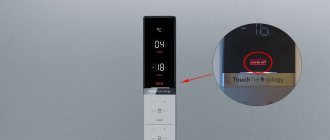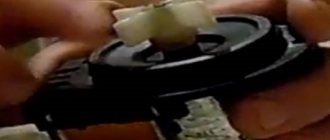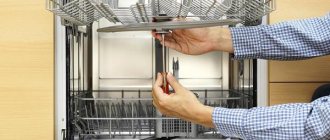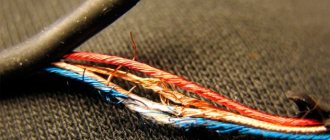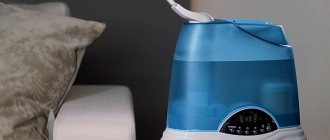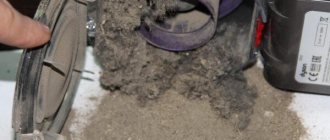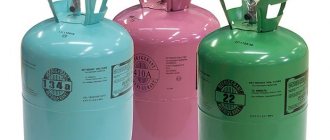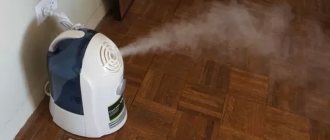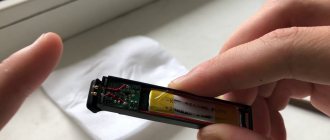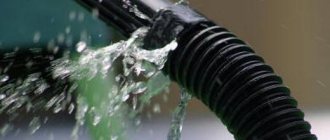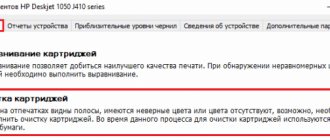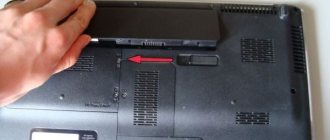The characteristic wheezing of speakers in a car is a fairly common problem that can be easily eliminated if you understand where to look for the cause. For this it is necessary,
- first, “calculate” exactly which (which) of all the speakers in the cabin are working with distortion.
- Secondly, determine at what volume the wheezing appears - at maximum, increased or any volume.
- Thirdly, based on these factors, look for the cause in the places described below.
How to identify wheezing car speakers
Sound distortion in the form of unpleasant wheezing can appear both in all speakers in the cabin, and in just one of them. At the first stage of troubleshooting, it is extremely important to establish this. There are several ways to do this. Let's look at the two most understandable and simple ones.
The first method is to mute the speakers one by one using the car radio settings menu. Even in cheap Chinese options, this feature is usually provided. It is implemented in the form of balance and fader adjustment. Referred to as the BAL and FAD settings, respectively.
Balance is an adjustment of the car radio that allows you to distribute the power of the amplifier built into it between all the right and left speakers. That is, if you twist (press) BAL in one direction or the other, you can completely muffle all the sound from one side of the cabin. For example, if you turned the balance completely to the right or left, and the wheezing of the speakers disappeared, then it now becomes clear whether it is on the left or right relative to the interior.
However, this is still not enough. With the help of balance, you can only determine the side of the speaker that is causing distortion. However, on the one hand there are at least two of them. To figure out whether the front or rear is wheezing, adjusting the fader (FAD) can help. This adjustment redistributes the car radio's output power between the front and rear speakers.
Example. Let's say that after adjusting the balance, it turned out that the wheezing disappeared when all the power was shifted to the right side. In this case, you now need to reconfigure the balance completely to the left. The wheezing will return. Next, using the fader settings, you need to alternately direct all the power to the front left and rear left speakers.
After playing with just these car radio settings, you will definitely figure out the speaker that is wheezing. But only if there are only four of them in the cabin. If there are two or more speakers on any of the four channels, this complicates the situation. And you can get out of it by using the second diagnostic method.
It consists in alternately physically disconnecting the dynamic heads from the signal wires. In this case, you will have to disconnect not from the car radio, but directly from the speakers themselves. The task is to find a speaker, after which, when turned off, the wheezing will disappear. This method, by the way, will help if the radio does not have the settings described above (as a rule, balance adjustment is available on all models, but FAD is not always available).
The next step is to understand at what volume level a wheezing speaker wheezes. Distortion can occur both at maximum volume and at minimum volume. In the process of calculating a faulty speaker, it is very desirable to establish this point. This will be useful for further diagnosis.
All the speakers in the car wheeze at the same time
The situation when all the speakers in a car wheeze at the same time is quite rare, especially if we are talking about a standard car audio system installed in the cabin. Car manufacturers strive to select the right radio for the speakers so that there are no extraneous sounds during their operation.
Incorrect power selection
If you purchased a car on the secondary market, and all the speakers in it wheeze at high volume, the problem may be hidden in incorrectly selected power.
When the radio produces a more powerful signal than the maximum the speaker system can receive, wheezing will be heard from all speakers during their operation. That is why, before buying a new radio or speakers for your car, you must compare their power. Almost all modern car radios operate at a power of about 50-55 W. At the same time, only high-quality speakers can withstand such power. It is necessary to compare the power of the radio with the rated power of the speakers. Please note: Most speaker manufacturers use a marketing ploy to emphasize peak power rather than rated power. You cannot rely on this parameter when selecting speakers for your radio.
Most often, to find out the rated power from the peak power, you need to divide it by 10. For example, if the peak power, also known as the maximum, is indicated at 300 W, then such speakers will be able to work in normal mode with radios with a power of 30 W or less.
Problems with radio output
On budget radios, all car speakers can be connected to one output. If such a radio is installed in your car and the speakers wheeze during operation (even at not the highest power), you should check the condition of the output. Make sure that there are no signs of corrosion or various damages. It wouldn’t hurt to “ring” the circuit from the radio output to the speakers.
Speaker failure
A situation where all the speakers in a car fail at the same time is very rare, but it is possible. For example, drivers who have been listening to music at high volume for several hours in a row may encounter this problem.
When listening to music at high volumes, the speaker coils may overheat. Most often, they are secured with glue, which begins to melt under the influence of high temperatures, and the coils peel off from the speaker. This leads to wheezing when car speakers operate. In such a situation, they will need to be replaced.
Please note: In some situations, due to long operation of the radio at maximum power, the amplifier may fail
The speaker in the car wheezes, what should I do?
Speakers and speaker systems have been designed specifically to enhance the sound volume and improve the quality of the main speakers. They are used when connecting at large concerts, holidays and even in home theaters. To get the desired quality, you need to choose the right device model and manufacturer.
Sometimes during operation, unpleasant system failures or electronic problems may occur, leading to a deterioration in the quality of the output melodies.
One of the possible problems is the characteristic wheezing in the speakers. It interferes with playback and creates unpleasant noise.
In our article we will tell you about the possible reasons and advise how to restore the normal functioning of the speakers.
Causes and solutions
Before starting work, it is necessary to identify the source of the problem and assess the complexity of the damage. In case of minor failures, you can repair the equipment yourself; in case of more complex failures, it is recommended to contact a specialist who will assist in repairing the device. Here are some common problems that lead to wheezing:
- Mechanical damage to the speakers or connected wires.
- Malfunction of the electronics and microcircuits of the device.
- Moisture and other foreign objects entering the housing.
- The connected equipment does not match the capabilities of the speakers.
- The amplifier is incorrectly selected.
- Speaker wear and poor performance.
Depending on the cause, the repair and troubleshooting algorithm will differ. In case of mechanical damage, it will be necessary to eliminate the defect or replace parts of the case, and in case of failures in the electronics, detailed diagnostics and restoration of the operation of microcircuits and boards will be required.
IMPORTANT: If you keep the warranty card, you will be provided with free diagnostics and repair of the equipment. In order for the warranty card to remain valid, you cannot repair it yourself.
Speaker wheezing and hissing
Most often, users encounter problems with low-quality speaker systems.
The most pronounced malfunctions are manifested by a characteristic wheezing, which interferes with listening to audio recordings.
If you are faced with such an unpleasant situation, you need to evaluate the condition of the equipment point by point and, in accordance with the instructions, carry out repairs and adjustments to ensure normal operation of the system.
IMPORTANT: The system itself may be outdated or poorly assembled; buy proven devices in branded stores. When outputting sound waves through any speaker, a special amplifier is used
It receives the signal and transmits them to the speakers
When outputting sound waves through any speaker, a special amplifier is used. It receives the signal and transmits them to the speakers.
There are two main indicators of the operation of this device: the output power of the signal and its resistance to the incoming load.
Wheezing at minimum or maximum volume
Why does my car battery drain overnight?
The test should begin at minimum volume. If wheezing occurs, we can conclude that the cause of the failure is loose or damaged wires connected to the speakers. The problem can be solved by disassembling the equipment and inspecting its internal components.
If the sound is normal, you can gradually move to higher volume levels. Did the wheezing occur at a high sound level? Then failures occur due to:
- Ingress of foreign objects causing vibrations and, as a result, sound disturbance;
- Ingress of moisture, causing disruption of contacts in wiring and connections of radio components;
- The capacitor designed to output the amplitude of the sound wave is damaged. It should be noted that these radio components very often break (swell) and become inoperable. The solution to the problem is to install a new capacitor with the same capacity and voltage.
One speaker in the car wheezes
Why does the turbine drive oil into the intercooler?
When one speaker in a car wheezes, you can definitely say that the problem is not related to the choice of power. You need to act depending on the volume at which the wheezing is heard.
The speaker wheezes at minimum volume
When you hear wheezing from one speaker at the lowest volume, you can confidently say that it is faulty. Most often the problem is with the wires connecting the coil and the terminal. If they are broken or frayed, this will cause wheezing during their operation. In such a situation, it is recommended to disassemble the speaker and solder new wires in place of the old ones, always of the same cross-section.
The speaker wheezes at maximum volume
When only one speaker wheezes at maximum volume, troubleshooting should be done as follows:
- Check the condition of the capacitor. If the amplifier's output cannot handle the power, the sound will become distorted. In such a situation, it may be necessary to replace the capacitor;
- The speaker is dirty. To check the speaker for dirt, you need to disassemble it and make sure that sand, stones and dirt have not gotten inside. The speaker is quite easy to disassemble; you need to remove the suspension and diffuser, which are secured with screws. To clean the speaker, you need to carefully blow it with a compressor used for computer boards, or clean it with a soft brush.
- Dynamic bay. If water gets into the speaker, it will need to be replaced. This is due to the fact that the suspension gets wet in a humid environment, causing wheezing.
Important: Before any test of one speaker, you need to make sure that the malfunction is related specifically to its operation. To do this, just connect one of the stable working speakers to the place of the faulty one.
If the sound continues to wheeze, you should check for the presence of oxides and corrosion at the output of the radio, and also “ring” the wires in the circuit.
How is it wheezing?
When performing diagnostics, many specialists resort to assessing the characteristics of wheezing sounds. You need to carefully listen to the operation of the device and make an assessment of the intensity of distortion by:
- Temporary state of the device. When you turn on the speakers, you hear constant wheezing or these defects appear only for a certain period of time;
- The status of each device. Wheezing is heard from both speakers or only one device is faulty;
- By power, frequency characteristics, intensity level of track playback;
- The occurrence of wheezing when placing speakers near telephones or other electrical appliances.
This will provide an opportunity to identify the cause of the problem, understand the complexity of the problem, and take steps for further testing and repair. Below is a list of possible situations associated with the appearance of hissing and wheezing.
The wheezing appears in both columns. Nowadays, failure of both columns rarely occurs. When producing equipment, any manufacturer tries to introduce new technologies that improve the quality of devices. But when this situation occurs, the cause of the failure is not the insides of the speakers, but the sound output device (tape recorders, home cinemas and other equipment). It is necessary to connect and run the speakers from any other source. Once the problem is identified, you can begin repair work or purchase a new tape recorder.
The wheezing is heard only in one column. This situation occurs when the wires are damaged, the speakers are faulty, or the resistance and frequency response of the amplifier are incorrectly calibrated. If the make and model of both speakers is the same, then you can make the same settings on all speakers.
It should be noted that it is possible to accurately determine the source of the problem by connecting the system and listening to the clarity of the sound at various volumes (the goal is to identify the volume level at which wheezing appears).
All the speakers in the car wheeze at the same time
The situation when all the speakers in a car wheeze at the same time is quite rare, especially if we are talking about a standard car audio system installed in the cabin. Car manufacturers strive to select the right radio for the speakers so that there are no extraneous sounds during their operation.
Incorrect power selection
If you purchased a car on the secondary market, and all the speakers in it wheeze at high volume, the problem may be hidden in incorrectly selected power. When the radio produces a more powerful signal than the maximum the speaker system can receive, wheezing will be heard from all speakers during their operation.
That is why, before buying a new radio or speakers for your car, you must compare their power. Almost all modern car radios operate at a power of about 50-55 W. At the same time, only high-quality speakers can withstand such power. It is necessary to compare the power of the radio with the rated power of the speakers.
Please note: Most speaker manufacturers use a marketing ploy to emphasize peak power rather than rated power. You cannot rely on this parameter when selecting speakers for your radio.
Most often, to find out the rated power from the peak power, you need to divide it by 10. For example, if the peak power, also known as the maximum, is indicated at 300 W, then such speakers will be able to work in normal mode with radios with a power of 30 W or less.
Problems with radio output
On budget radios, all car speakers can be connected to one output. If such a radio is installed in your car and the speakers wheeze during operation (even at not the highest power), you should check the condition of the output. Make sure that there are no signs of corrosion or various damages. It wouldn’t hurt to “ring” the circuit from the radio output to the speakers.
Speaker failure
A situation where all the speakers in a car fail at the same time is very rare, but it is possible. For example, drivers who have been listening to music at high volume for several hours in a row may encounter this problem.
When listening to music at high volumes, the speaker coils may overheat. Most often, they are secured with glue, which begins to melt under the influence of high temperatures, and the coils peel off from the speaker. This leads to wheezing when car speakers operate. In such a situation, they will need to be replaced.
Please note: In some situations, due to long operation of the radio at maximum power, the amplifier may fail
Why do the speakers wheeze?
The main reasons for noise and wheezing in a car audio system are high humidity, dirt, overloading of speakers when listening to music at maximum volume, and lack of power. Each of these reasons is unique, may have different external manifestations, and breakdowns are eliminated in different ways.
All the speakers are creaking
If all the speakers wheeze, it means that the entire system is wearing out due to constant operation at maximum frequencies and severe overloads in the operation of the voice coils, which can move away from the speaker housings. Here - either speaker repair or complete replacement.
The second reason is the low voltage transmitted by the car’s electrical system to the acoustics. You need to check the electrical system, supply wires and contacts (sometimes they come loose due to vibration when the machine moves).
The third reason is that your acoustics require more power than the car’s electrics can supply. Can. Certainly. Install a more powerful battery in the car or increase the power of the generator, but it is better to change the acoustics to ones that are adequate to the technical capabilities of the car.
Finally, there is another reason for the “collective” wheezing in car audio speakers: the stereo output of the radio may be to blame (if all the speakers are connected to one connector). You should check the integrity of the connector, clean the contacts, and ring the entire circuit from the output to the speakers.
One speaker is broken
If the acoustic speakers themselves are faulty (one of them is wheezing), they can be repaired. To do this, you need to have at least a basic understanding of their structure, connection principle and possible causes of failure. Most often, the speaker in the car is damaged by:
If even after this the wheezing in the speaker does not stop, check the charge storage device (if the amplifier at the output cannot cope with the given power, the sound is distorted and the two-terminal circuit must be replaced) or disassemble and clean the sound emitter from debris.
Wheezing at minimum and maximum volume
The main thing is to establish the exact cause of the breakdown, have a minimum set of tools and understand a little about electrical circuits. And remember: if simple repairs do not work, it is better to have the speakers repaired by radio technicians, or buy new speakers.
